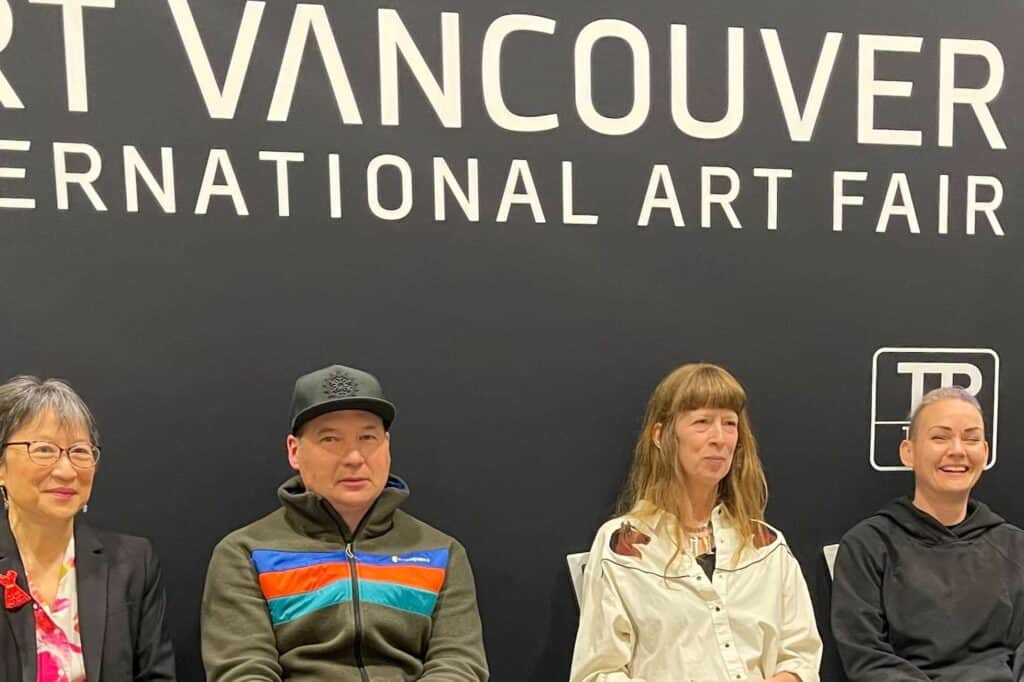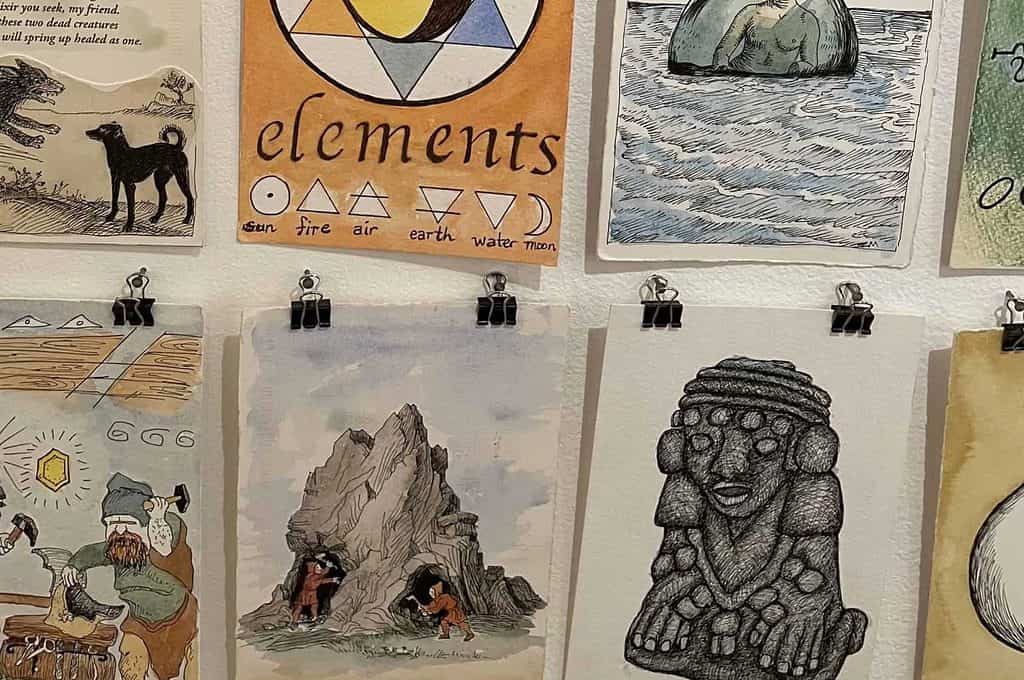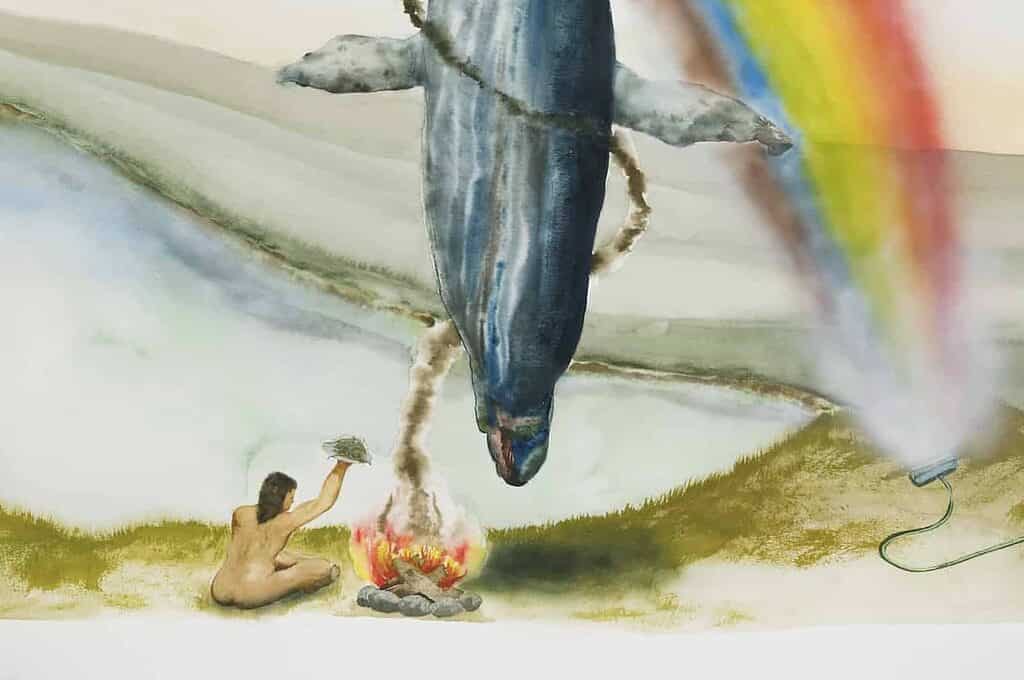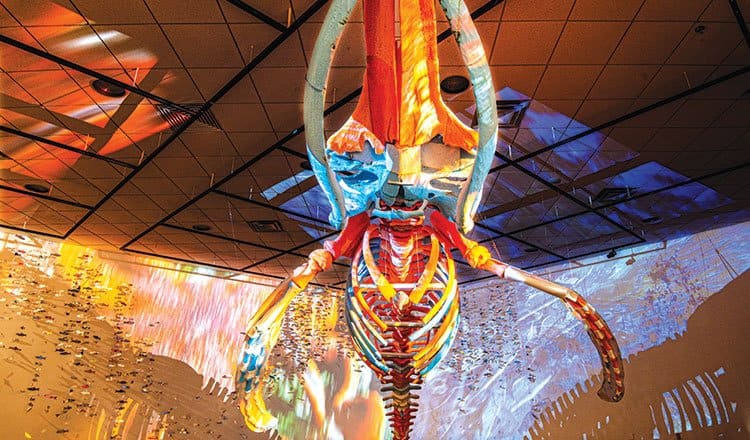Harreson Tanner and Serena Kovalosky have just returned from a two-week scouting mission around the territory, but there is no sign of road-weary haggardness.
Instead, both brim over with excitement for their collaboration on an ambitious art exhibition that will bring the Yukon’s artistic largesse to the outside world.
Best known for his clay and bronze sculptures of Northern icons, Tanner has become part of the local arts tapestry.
But it is his involvement in the Copper Moon Gallery and the Yukon Artists at Work co-op, that speaks to his support of local artists seeking to bring their work to the public.
Enter Serena Kovalosky, a seasoned curator and arts administrator visiting from upstate New York—on a mission.
Tanner and Kovalosky are spearheading an art exhibition that will bring a vast spectrum of unique Yukon artists and their work to the United States.
The two, freshly returned from this curatorial excursion along with photographer Christian Kuntz, interviewed and photographed artists from Ross River, Dawson and communities beyond.
Wood carver Ken Anderson, watercolourist Lillian Loponen, knife maker George Roberts, carver Bud Young and painter/biologist Joyce Majiski are among the 16 Yukon artists who will make up the eclectic exhibition, chosen to represent the depth of the Yukon’s artistic prowess.
Lillian Loponen.
Tanner and Kovalosky say the final will be comprised of about half First Nations artists and half non-First Nations.
Tanner’s belief in Yukon artists and Kovalosky’s curatorial expertise complement each other as they paint a picture of the envisioned exhibition.
Their hope is that the collection of Yukon art will travel to a handful of museums throughout the Northeastern states.
“This will be the first big event that takes local artists out to the rest of the world,” Tanner says.
The exhibition, tentatively titled What We See: Visions of Canada’s Yukon Past and Present, reflects the territorial slogan, “Larger Than Life”. Pieces with volume and heft have been selected, and the choice of museum venues rather than art galleries reinforces that message.
Kovalosky describes the impact of large pieces in vast space: “I want people to walk in and really see that [bigness].”
It is clear that the two struck gold on their two-week scouting trip.
While awed by the variation and expertise in artistry, they also quickly discovered “the stories are just as interesting as the art,” as Kovalosky puts it.
Tanner relays Majiski’s story of standing in the midst of a caribou stampede; scat, stink, hair, and snort washing up and over her, until the herd disappearing over the brink of a hill into sudden silence.
The anecdote gives Majiski’s powerful imagery of caribou stampedes even more thrust, Kovalosky relates.
“She was actually living in it.”
Such stories have been collected, along with photographs and video, to complement the artwork itself in order to create more than a travelling exhibit; the artists, the curators, their work, and their stories have built a community.
This preliminary fact-finding work, as Kovalosky says, “creates an energy around the project —the artists are already invested.”
Tanner and Kovalosky hope the exhibition will take place in 2014.
Further information about the project, and brief profiles of some of the artists, can be found on Kovalosky’s blog at www.artfulvagabond.com.




